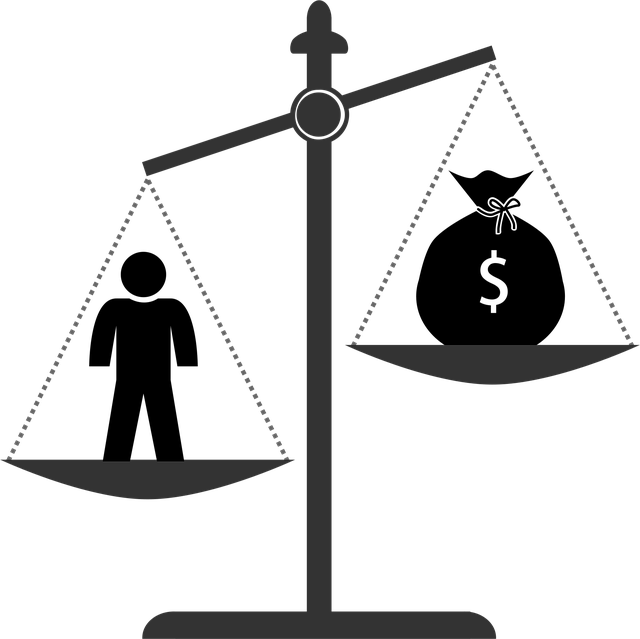Witness Testimonies: Key to Success for Workplace Accident Lawyers
Witness testimony is a crucial element for workplace accident lawyers, providing firsthand accounts…….
In an era where workplace safety is a paramount concern, the role of a Workplace Accident Lawyer has become increasingly pivotal. This legal specialty focuses on advocating for victims injured in occupational accidents, ensuring they receive fair compensation and justice. The modern landscape demands a comprehensive understanding of this field, as it plays a crucial part in fostering safer work environments and holding employers accountable. This article aims to provide an extensive guide, delving into various aspects of workplace accident law, its global impact, economic implications, technological innovations, regulatory frameworks, challenges, successful case studies, and future prospects. By exploring these facets, readers will gain valuable insights into the complex world of legal representation for workplace accidents.
A Workplace Accident Lawyer is a legal professional specialized in representing individuals who have suffered injuries or harm due to workplace incidents. This includes a wide range of cases, from slip-and-falls and machine-related accidents to exposure to hazardous substances and occupational diseases. The lawyer’s primary role is to navigate the complexities of personal injury law, workers’ compensation, and relevant industrial safety regulations to secure optimal outcomes for their clients.
The core components of this practice area include:
Personal Injury Law: Lawyers must possess a deep understanding of tort law, which involves civil wrongs and the resulting damages. They argue on behalf of clients to hold negligent parties liable for their injuries.
Workers’ Compensation: This is a crucial aspect where lawyers assist employees in navigating claims against their employers for work-related injuries or illnesses. It often involves a system of benefits and legal processes specific to each jurisdiction.
Occupational Safety and Health (OSH) Regulations: Lawyers must be well-versed in local, state, and international OSH laws and standards. These regulations set minimum safety and health requirements for workplaces, and lawyers ensure employers adhere to them.
Negligence and Liability: Proving negligence is a key skill. Lawyers must demonstrate that an employer or another party owed a duty of care, breached that duty, and the breach directly caused the client’s injuries.
The concept of workplace accident law has evolved over time, reflecting societal shifts towards prioritizing worker rights and safety. Historically, workers often had limited recourse when injured on the job, leading to long-standing struggles for better labor protections. The 20th century saw significant developments, including the establishment of workers’ compensation laws in many countries, which provided a foundation for legal representation in workplace accidents.
Today, this field is vital for several reasons:
Advocacy for Victims: It ensures that employees who sustain injuries or develop illnesses related to their work have a voice and can seek justice.
Accountability for Employers: Lawyers play a critical role in holding employers responsible for maintaining safe workplaces, adhering to regulations, and providing proper training and equipment.
Prevention and Education: Through successful cases, these lawyers contribute to raising awareness about workplace hazards, encouraging better safety practices, and potentially influencing policy changes.
The impact of workplace accident law is not limited by geographical boundaries. It has become a global phenomenon, with variations tailored to different legal systems and cultural contexts. International organizations and treaties have played a significant role in harmonizing standards and promoting best practices worldwide. For instance, the International Labour Organization (ILO) provides guidelines and conventions on occupational safety and health, influencing legal frameworks across nations.
North America: The United States and Canada have well-established workplace accident law systems, with robust workers’ compensation programs and personal injury litigation. Recent trends include increased focus on silicosis claims related to construction and industrial work and the rise of legal challenges against manufacturers for defective equipment.
Europe: European Union member states have harmonized workplace safety regulations, but individual countries maintain their legal traditions. The UK, for example, has a robust personal injury litigation system, while Germany focuses on collective labor law and works council involvement in safety matters.
Asia Pacific: This region is witnessing rapid industrialization, leading to a surge in workplace accidents. Countries like Australia and Japan have comprehensive legal frameworks, while others are developing their workplace accident laws to keep pace with economic growth.
Middle East and Africa: Some countries in these regions are adopting Western legal systems, incorporating elements of workers’ compensation and personal injury law. However, traditional customs and labor practices can still influence the approach to workplace accidents.
The workplace accident lawyer industry is a significant sector within the broader legal services market. According to a 2021 report by Grand View Research, the global legal services market size was valued at USD 347.5 billion in 2020 and is projected to grow at a compound annual growth rate (CAGR) of 6.8% from 2021 to 2028. Within this, workplace accident-related cases contribute substantially, driven by increasing industrial activities and growing awareness of worker rights.
Law firms specializing in workplace accident law attract significant investments from clients seeking specialized representation. These firms often employ highly skilled lawyers with expertise in various industries, enabling them to handle complex cases effectively. The demand for these services is influenced by:
Growing Industrialization: As countries experience economic growth and industrialization, the number of workplace accidents increases, driving up the need for legal assistance.
Stricter Regulations: More stringent occupational safety regulations encourage employers to seek legal counsel to ensure compliance, leading to increased business for workplace accident lawyers.
High-Profile Cases: High-value or high-profile workplace accident cases can attract media attention, creating awareness and potentially increasing demand.
The economic implications of workplace accident law are far-reaching:
Employer Costs: Employers incur direct costs related to accidents, including medical expenses, compensation payments, and legal fees. They also face indirect costs such as reduced productivity, employee turnover, and damage to reputation.
Government Expenditure: Public funds are utilized for workers’ compensation programs, unemployment benefits, and healthcare services for injured workers.
Productivity and Innovation: Effective workplace safety measures can enhance productivity and reduce accidents, fostering a positive environment for economic growth and innovation.
Technology has revolutionized workplace accident law, improving efficiency, accessibility, and outcome prediction. Some key advancements include:
Case Management Software: Lawyers use specialized software to manage client cases, track deadlines, organize documents, and communicate with clients and experts. This streamlines legal processes, ensuring nothing is overlooked.
Digital Evidence Analysis: With advancements in forensics and data analytics, lawyers can now analyze complex digital evidence, such as security footage, sensor data, and electronic records, to reconstruct accidents and determine liability.
Online Legal Research: The internet has made vast legal resources accessible, enabling lawyers to conduct thorough research on relevant laws, cases, and industry standards efficiently.
Artificial Intelligence (AI): AI-powered tools assist in predicting case outcomes, identifying patterns in similar cases, and automating routine tasks. However, ethical considerations and the potential for bias in AI algorithms are essential concerns.
Blockchain Technology: This distributed ledger technology can enhance transparency and security in handling sensitive legal documents, insurance claims, and worker compensation records.
Telemedicine and Remote Work: The rise of remote work has led to an increase in telemedicine, impacting workplace accident cases. Lawyers must adapt to virtual depositions, remote client meetings, and the challenges of obtaining evidence in a digital environment.
Workplace Accident Law is shaped by a myriad of policies and regulations that vary across jurisdictions:
Workers’ Compensation Acts: These laws provide benefits to employees injured or ill due to their work, typically enforced through insurance programs. The scope and benefits vary globally, with some countries offering comprehensive coverage while others have more limited provisions.
Occupational Safety and Health (OSH) Standards: Set by regulatory bodies, these standards dictate minimum safety requirements for workplaces. Non-compliance can result in penalties and legal action. Examples include the Occupational Safety and Health Administration (OSHA) standards in the US and the European Agency for Safety and Health at Work (EU-OSHA) directives.
Personal Injury Laws: Civil laws governing tort liability, damages, and compensation for non-workplace accidents also impact workplace accident law. These laws define the rights of injured parties to seek redress from negligent individuals or entities.
The development and enforcement of workplace accident policies and regulations are influenced by:
International Organizations: As mentioned, bodies like the ILO play a significant role in setting global standards for occupational safety and health. Their conventions and guidelines often serve as models for national legislation.
Government Initiatives: Governments introduce laws to address specific workplace hazards or industry challenges. For instance, after high-profile industrial disasters, new regulations may be enacted to prevent similar incidents.
Trade Associations and Labor Unions: These groups advocate for safer workplaces and employee rights, influencing policy development and enforcement. They often collaborate with regulatory bodies to ensure that regulations remain relevant and effective.
Despite its importance, workplace accident law faces several challenges:
Complex Liability Issues: Determining liability in workplace accidents can be intricate, especially in cases involving multiple parties or complex industrial processes. Proving causation and apportioning responsibility can be a significant hurdle for lawyers.
Varied Legal Systems: The diversity of legal traditions and interpretations across jurisdictions poses challenges for international cases and cross-border disputes. Adapting to local laws and customs requires careful navigation.
Underreporting and Documentation: Some workplace accidents, particularly in informal sectors or developing countries, may go unreported due to fear of retaliation, lack of awareness, or inadequate record-keeping systems. This poses challenges for legal representation and accurate data collection.
Criticisms of workplace accident law include:
Cost and Accessibility: Legal services can be expensive, making them inaccessible to low-income workers. This disparity may hinder their ability to seek justice and compensation.
Lengthy Litigation: Workplace accident cases often involve extensive discovery processes and complex legal arguments, leading to prolonged litigation. This delays access to justice and can impact the financial stability of injured workers.
Industry Resistance: Employers and industry groups sometimes resist stringent safety regulations and legal accountability, arguing that it may hinder business growth and innovation.
To address these challenges, several strategies can be employed:
Legal Aid Programs: Governments and legal organizations can offer subsidized legal services to low-income workers, ensuring access to representation.
Alternative Dispute Resolution (ADR): Techniques like mediation and arbitration can streamline dispute resolution, reducing litigation time and costs while maintaining fairness.
Industry Collaboration: Encouraging collaboration between employers, employees, and regulators can lead to more proactive safety measures and a culture of shared responsibility.
In the late 20th century, South Africa faced a severe silicosis crisis among mineworkers. This occupational disease, caused by prolonged exposure to silica dust, led to thousands of deaths and significant legal challenges. Workplace Accident Lawyers played a pivotal role in representing affected workers, arguing that mining companies had neglected safety measures and failed to provide adequate protection. The case resulted in landmark judgments, leading to improved industry-wide safety standards and compensation for victims.
Lessons Learned:
Public Awareness and Advocacy: High-profile cases can raise public awareness about workplace hazards, prompting regulatory changes and industry improvements.
Collective Action: Class-action lawsuits or representative actions can be powerful tools for holding large corporations accountable and ensuring fair compensation for numerous victims.
Following the 9/11 terrorist attacks in New York City, first responders faced severe health issues due to exposure to hazardous substances at Ground Zero. Workplace Accident Lawyers successfully argued that the response efforts were mismanaged, leading to inadequate safety protocols and long-term health consequences. The case resulted in a significant settlement, providing compensation and medical coverage for affected individuals.
Key Takeaways:
Complex Environmental Hazards: Lawyer expertise is crucial when dealing with complex environmental factors and their impact on worker health.
Long-Term Impact: Many workplace accidents have long-lasting effects, requiring ongoing legal support and advocacy for victims’ rights and medical needs.
The workplace accident lawyer field is poised for growth, driven by several factors:
Globalization: As businesses expand internationally, the need for specialized legal advice on cross-border workplace safety issues will increase.
Technological Advancements: New technologies introduce new risks and challenges, requiring lawyers to adapt and develop expertise in emerging areas like cyber safety and autonomous vehicles.
Changing Workplace Dynamics: The rise of remote work, gig economy, and independent contractors presents unique legal challenges, creating opportunities for specialized workplace accident services.
AI and Predictive Analytics: Lawyers will increasingly use AI to analyze large datasets, identify trends in workplace accidents, and predict potential hazards, enabling proactive legal strategies.
Blockchain for Transparency: Blockchain technology can enhance transparency in insurance claims, worker compensation, and regulatory compliance, reducing fraud and streamlining processes.
Mental Health at Work: With growing awareness of mental health issues in the workplace, lawyers may see an increase in cases related to psychological hazards, such as burnout and stress.
Workplace Accident Law is a dynamic and crucial field that safeguards the rights and well-being of workers worldwide. Its complexity arises from navigating diverse legal systems, evolving technologies, and the intricate nature of workplace safety issues. As societies continue to prioritize industrial safety and worker protection, this legal specialty will remain essential in ensuring accountability, promoting justice, and fostering safer work environments.
By understanding the historical context, global impact, technological advancements, and challenges faced by workplace accident lawyers, we can appreciate the significance of their role in shaping a more secure future for workers. As the field evolves, ongoing research, collaboration, and adaptation will be vital to address emerging trends and issues.
Q: What is the primary role of a Workplace Accident Lawyer?
A: A Workplace Accident Lawyer represents employees or victims who have suffered injuries or illness due to their work. They advocate for their rights, seek compensation, and ensure that employers adhere to safety regulations.
Q: How does technology impact Workplace Accident Law practice?
A: Technology has streamlined legal processes, improved access to information, and enhanced case management. Innovations like digital evidence analysis, online legal research, and AI-powered tools assist lawyers in various aspects of their work.
Q: What are some common workplace hazards that Workplace Accident Lawyers deal with?
A: Workplace hazards vary widely but include physical risks (e.g., slip and fall accidents, machinery injuries), chemical exposure (e.g., silica dust, hazardous substances), ergonomic issues, mental health stressors, and emerging risks like those associated with automation and remote work.
Q: Can you explain the concept of collective action in Workplace Accident cases?
A: Collective action refers to a group of individuals joining forces to take legal action against a common defendant. In workplace accident cases, this can involve many victims suing a corporation for neglecting safety protocols, leading to significant settlements or judgments that benefit all affected workers.
Q: How do Workplace Accident Lawyers handle complex liability issues?
A: Complex liability cases often require in-depth investigations and expert analysis. Lawyers carefully construct legal arguments, apportion responsibility based on evidence, and collaborate with experts to strengthen their case. They also consider multiple lines of defense and potential settlement options.

Witness testimony is a crucial element for workplace accident lawyers, providing firsthand accounts…….

When a loved one dies due to preventable causes like workplace accidents or medical negligence, a sk…….

In case of a workplace accident, retaining a workplace accident lawyer is vital. These specialists p…….

Witness testimony is a critical component for workplace accident lawyers, providing essential insigh…….

A workplace accident lawyer is indispensable for employees injured on the job, specializing in compl…….

After a workplace accident, a workplace accident lawyer is vital for navigating complex workers'…….

Severe back injuries on the job may lead to life-altering consequences and warrant legal action. Ret…….

Navigating complex legalities surrounding workplace accident lawyer cases is crucial for oilfield an…….